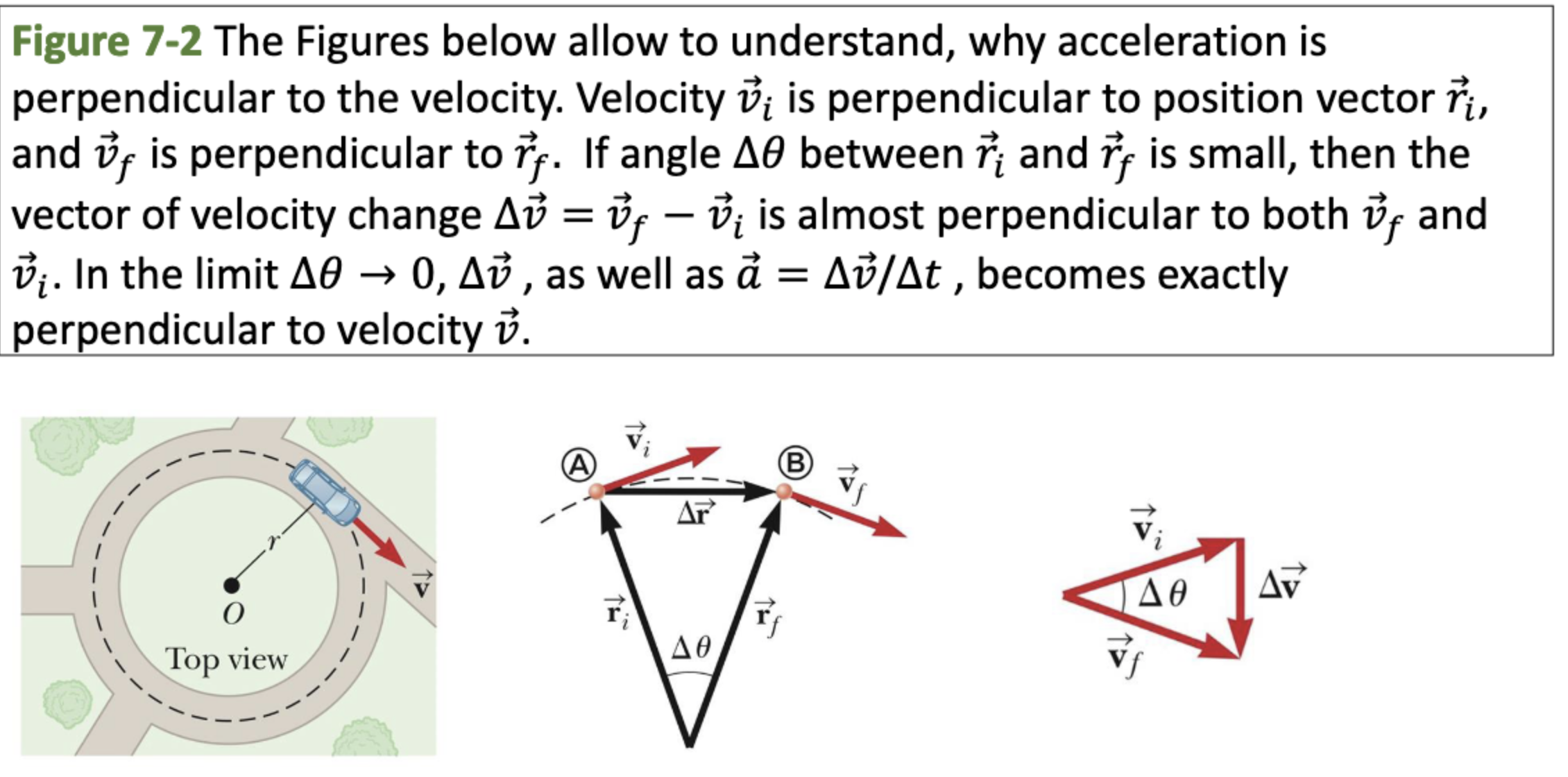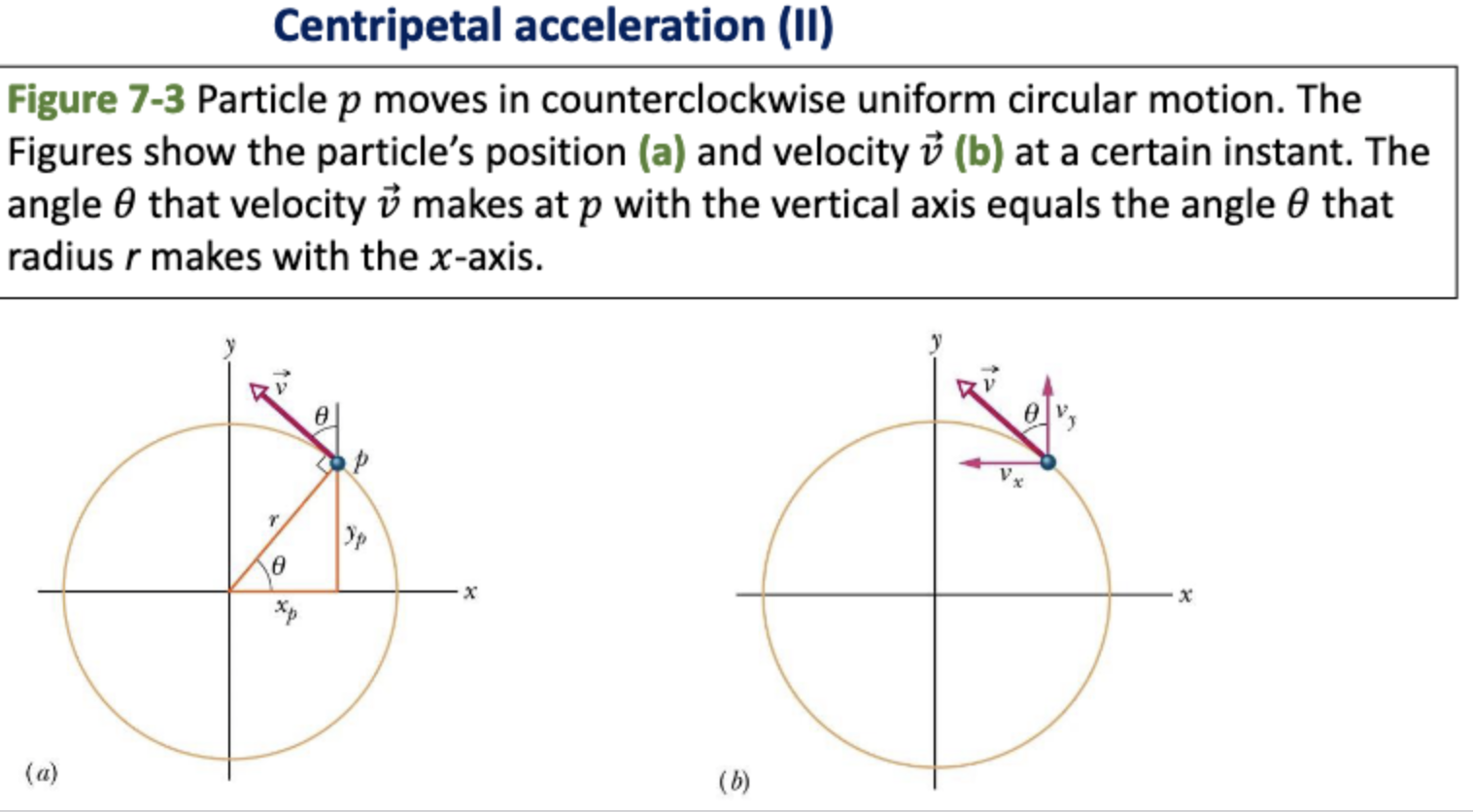- Circular Motion in 2D.
- Uniform circular motion.
- Time period, angular speed.
- Non-uniform circular motion.
Circular Motion
- Object goes around circle at a constant speed.
- Constant speed not velocity as velocity cannot be constant in a circle.
- The direction is always changing ⇒ velocity is always changing.
- Here the magnitude of velocity, i.e. speed, stays constant.
- Velocity is always tangential here.
- Change in velocity is toward the inside.
- Since there is no change in tangential velocity, there is no tangential acceleration.
- The only acceleration is to keep the object in the circle–centripetal acceleration.
- When we look at the change in velocity (basically the change in direction here), and make the time interval very small, hence making the angle traversed very small, our is almost perpendicular to both initial and final velocity. Since acceleration is , acceleration is also perpendicular to velocity. Toward the center.

Centripetal Acceleration
Expression for centripetal acceleration

- Particle moves around a circle at .
- is perpendicular to .
- is at angle to the x-axis.
- By geometry, is the angle between and the vertical.
Angle acceleration makes with x-axis:
Period and Angular Speed
(speed = distance / time ⇒ time = dist / speed)
- Time period: time taken to complete one cycle.
- Rotation rate: the number of cycles completed in one second.
Non Uniform Circular Motion
- Now net acceleration is not toward center.
- If car is accelerating, net acceleration is ahead of center.
- If car is de-accelerating, net acceleration points behind center.